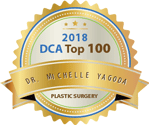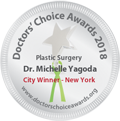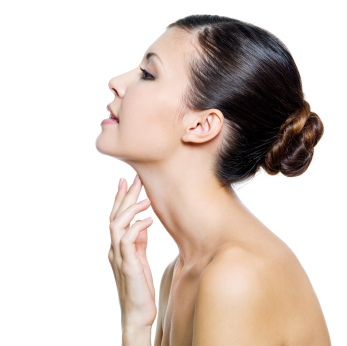The two best ways for décolletage protection from further damage and to prevent wrinkling and sagging with age are to practice neck exercises and to use sun protection.
Neck exercises
Workouts for your neck have the same effect on the décolletage as crunches have on your abs. The principle is that you identify the specific muscle and work it, first by itself and later with your fingers to create resistance. The problem is that some muscle areas are difficult to work, and the movements may be exceptionally subtle. Ideally, an expert should supervise your technique, but there are some beginner exercises that you can do by yourself in front of the bathroom mirror at home. Ask Dr. Yagoda about the best neck exercises for décolletage prevention.
Sun protection
To choose the best possible kind of sun protection for the décolletage as well as the rest of your body, it helps to understand how the sun’s rays harm us: UVA, the rays that cause premature aging, are absorbed deeply by the skin where they affect collagen and elastin, causing freckling, premature wrinkling, and leathery texture while generating oxygen free radicals that cause cell mutation and possible melanoma. UVB, the rays that tan us, can cause sunburn. UVB rays are absorbed at the skin surface where they generate oxygen free radicals that cause cell damage and possible skin cancer.
Preventing sun damage
- Most sunscreens and sunblocks protect adequately only against UVB rays. They often protect minimally against the UVA rays.
- UVA rays are the same intensity throughout the year, regardless of the season. They permeate through glass, so they can affect you even when you are indoors.
- The SPF (sun protection factor) scale pertains only to UVB protection. The FDA is working on adopting a scale for UVA protection; however, none has been approved to date. In order to assure full UVA protection, your sunscreen/block must list “FULL UVA/UVB protection” on its label.
- If you’re confused by the SPF (sun protection factor) numbers, just remember that an SPF of 15 allows you to be in the sun 15 times as long to obtain the same amount of UVB damage as you would without sunblock.
- There are two basic types of sunscreens/sunblocks: chemical and physical.
- Physical sunscreen/block typically includes a clear or micro-aerosolized version of zinc oxide (the only ingredient that adequately protects against the full spectrum of the broad band of UVA rays) and titanium dioxide that protects against UVB and some UVA rays. Long used as an anti-inflammatory for baby diaper rash, zinc (alone or in combination with titanium dioxide) has a proven safety record that makes it the only sunblock/sunscreen safe enough for use on babies under the age of 6 months. It is also the sunblock/sunscreen of preference in those with skin allergies, psoriasis and eczema.
- Chemical sunscreen/block (active ingredients might include octylmethoxycinnamate, PABA, or oxybenzone) is absorbed into the skin. When the UV rays meet the sunscreen/block, a chemical reaction occurs at the skin’s surface. Those with sensitive skin might experience irritation as a result of the reaction of the sunblock/screen with the energy of the UVB rays.
Undoing existing sun damage
While it’s never too late to prevent future damage, Dr. Yagoda offers treatments to erase signs of existing sun damage. Click here to learn more about décolletage treatments.



































